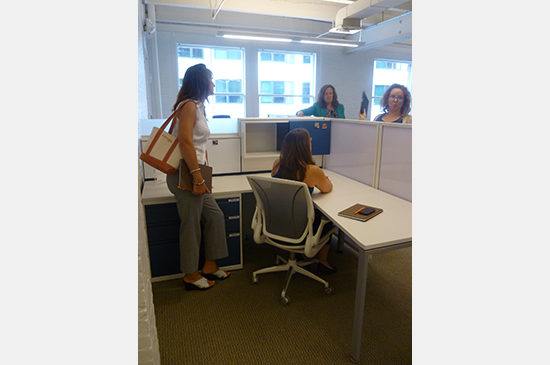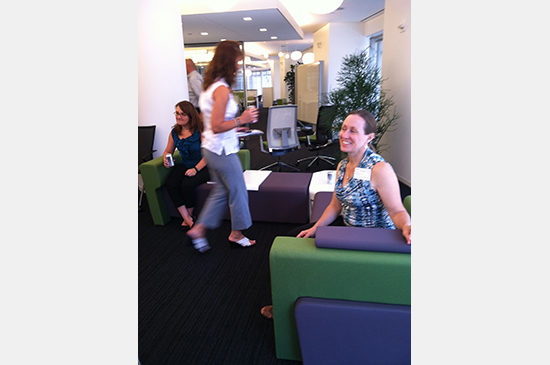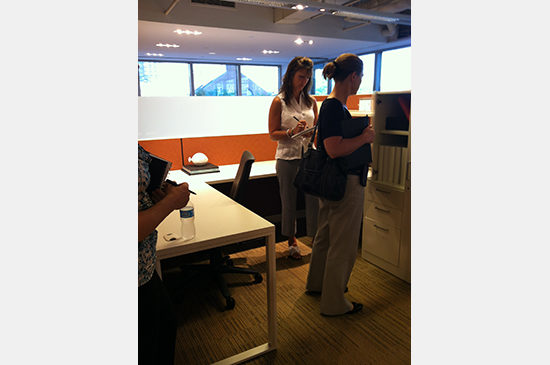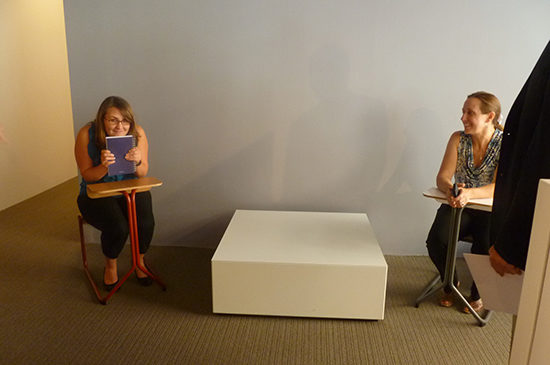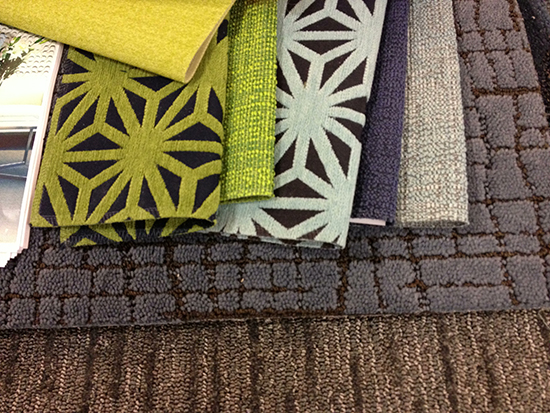
When relocating or renovating, companies shift their working environment to align with current trends in workplace design, like bringing in innovative ideas to keep up with competitors. Because leases are long (10 years) and space is expensive our clients look to us to generate designs that not only meet the needs of their employees but hold value for the term of their lease.
Our client, a Boston area pharmaceutical company, has done just that. They are moving to a new building in Kendall Square that has a lot of glass, public space and views. One thing that this new building will not have is a lot of offices. Due to the shift in the pharmaceutical industry over the years to a more open office plan, researchers and directors who are accustomed to private, 120 square foot offices are now moving into an open workstation that is about 40 square feet. This workstation will have low panels, allowing for natural light penetration into the office areas. Understandably so, this change is a daunting task for most users. Our client is not alone in their new ways of thinking. In his article in the LA Times, Cale Ottens describes how the company, Cracked.com, moved from a typical cubicle farm and closed door office space to a wide open office with some humor. In the interview, Soren Bowie, highlights the communal spaces, “…including three decked-out kitchens, a pingpong table and meeting rooms decorated with international themes. There is an authentic red phone booth in the “London room,” a Buenos Aires space and an Austin, Texas, room. “It’s nice to have all these different places,” he said. “It unlocks you a little bit.”
To begin this “unlocking” process, PAYETTE suggested that a furniture focus group be created that would be comprised of users to brainstorm and approve not only the typical workstations but to also program the rest of the spaces to fit their new needs. Working with this focus group, we identified several new needs including areas like private “breakout rooms,” lounge seating and informal meeting space in public areas, large conference spaces equipped with the latest technology and spaces for small groups to gather and collaborate.
We toured four furniture showrooms in Boston: Knoll, Peabody Office, Haworth and Allsteel and the users saw things that they liked a lot and, more importantly, saw things that they did not like/did not fit their culture. The showrooms were all very gracious and we had a great time trying out the latest and greatest in furniture design. We still have a way to go, but these tours put the users a bit more at ease and allowed them to envision the look and feel of their new office space.
On a side note, I have not found a dealer for the trampoline desk yet. Anyone?


